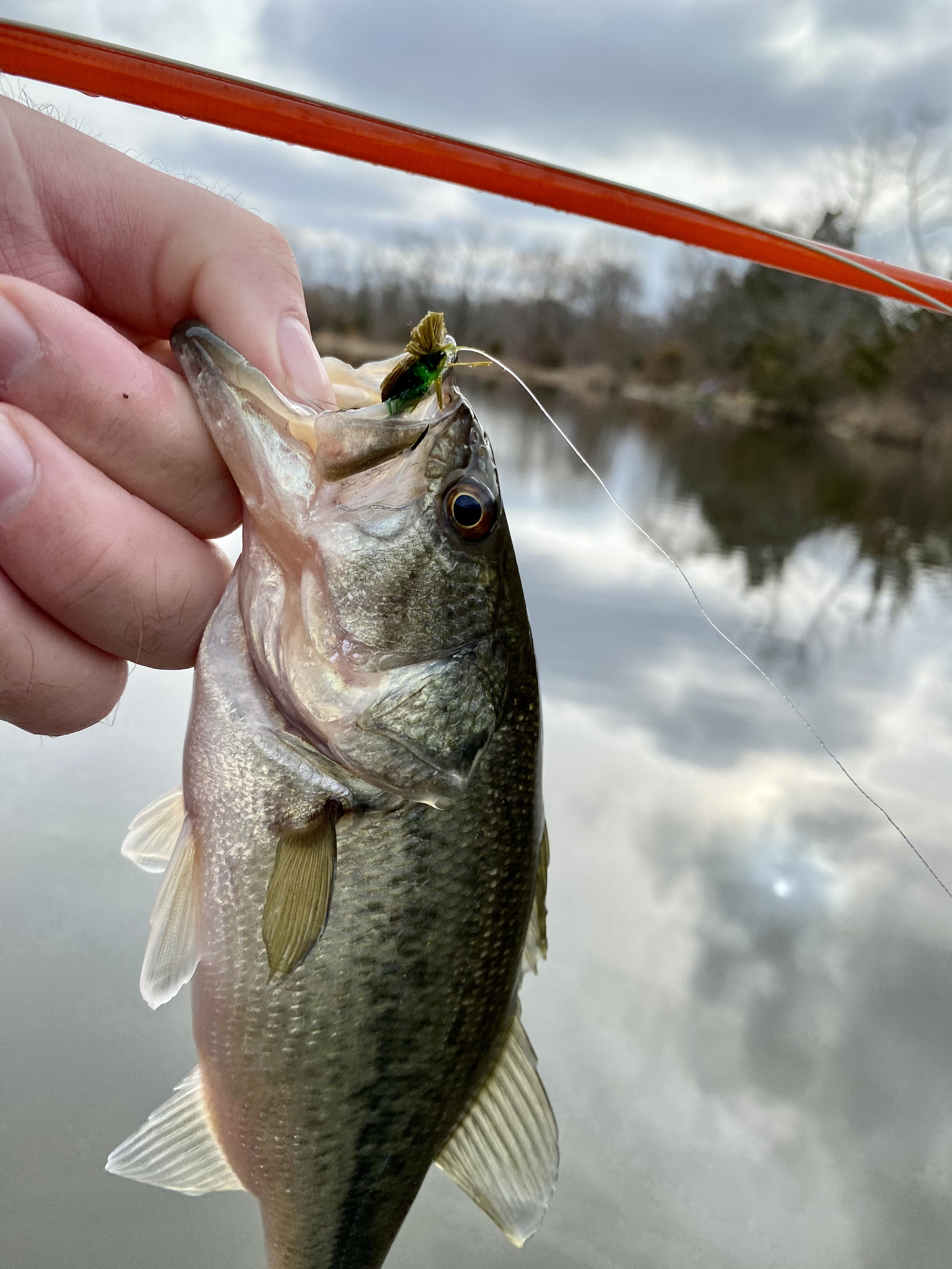In a recent Fly Tying Friday post, I wrote about a fly called the Cooper bug. The Cooper Bug has an interesting past that is intertwined with a fly called the Devil Bug. The Devil Bug was the precursor of a family of folded deer hair flies that includes flies like the Cooper Bug, the Goofus Bug, Doodle Bug, the Tom Thumb.
Fly fishing legend Gary Borger popularized a version of the Devil Bug designed to imitate caddisflies. However, it was not the Devil Bugs found in many trout fisher's fly boxes that interest me. It was the original version tied for largemouth bass at the beginning of the last century that piqued my curiosity.
An early Devil Bug catalog (photo credit Adirondack Experience)
I was first introduced to this pattern through a musty old pamphlet entitled How to Catch a Fish with O. C. Tuttle's Devil Bugs. I found the molding 22-page booklet in a box of donated fly tying materials that I was sorting for my local Trout Unlimited chapter. I took the yellowing pages home with me and read them cover to cover. Inside were drawings and descriptions of scores of devil bugs tied to catch everything from bluegills to tarpon.
Google is a fantastic resource! I was able to track down images of what I believe was the pamphlet in question (unfortunately, I no longer have the original). You can view the photos of the pages here.
William G. Tapply’s Bass Bug Fishing was the book that convinced me to tie up a few Devil Bugs
Even though the flies in that old catalog fascinated me, I never tied any until reading William G Tapply's (son of H.G. Tapply, the inventor of Tap's Bug) book Bass Bug Fishing (1999). In Tapply's book, he discussed the pattern briefly and included a color photograph of the version he fished. Shortly after reading that book, I tied up a few of these flies and added them to my bass bug arsenal. The fly worked well and caught its share of bass but produced no better than the scores of other patterns I tried. What kept me tying and fishing these flies was the ease with which they can be produced. Working with folded deer hair is a lot easier (and less messy) than working with spun deer hair. I tied up some smaller versions for panfish at some point and found them to be better fish catchers than the original fly designed for the bluegill's larger mossbacked cousin.
The original Devil Bug had many forms. Over 800 variations if you counted all the colors, shapes, and sizes! The Devil Bug I tie and fish most often reminds me of Jack Gartside's classic pattern, the Gurglar (see above photos). I tie the fly without eyes, wings, or propellers (yes, propellers). Just a simple fly with a tail and folded deer hair body with a flared hair head. I will at times embellish them with some rubber legs, but most of the time, it is just deer hair, a bit of flash and wool yarn, or flashy synthetic.
I have always enjoyed working with deer hair as it is one of my favorite materials, and there is something about deer hair that appeals to the fish. Perhaps it is the mouthfeel of a hair bug (fish tend to hold on to them longer), or maybe it is how they sit flush in the film and not floating above it like foam and cork bugs. Whatever the reason, they work well enough for me always to have a few on hand.
Many panfish and small bass fell victim to a Devil Bug during a recent fishing trip.
I enjoyed a few hours of unseasonable early topwater fishing a few weeks back. One of the flies that had made it onto the end of my tippet that day was a Devil Bug. It caught scores of bluegills and small bass ( I did hook and promptly break off one sizable bass that gently sipped a size 12 devil bug off the surface like a trout taking a mayfly). On this day, I was using a Devil Bug tied with olive deer body hair. Other favorite colors of mine include natural, white, black, yellow, and chartreuse.
I occasionally dress up my Devil Bugs with rubber legs but plain and simple is often the way to go.
I originally tied these flies with yarn or chenille bodies, but for the smaller versions designed for panfish, Semperfli's floating poly yarn makes excellent body material. For a little more flash and movement, I will use Semperfli's Straggle Legs for smaller flies or Straggle String on larger versions.
Whether you tie them for bass or panfish the Devil Bug should be a staple in your warm water fly box.
These old classic patterns work just as well as they did in the days of old, maybe even better with the inclusion of some modern materials. Tie a few up and give them a try.
Pattern Recipe:
Hook: Firehole 718 or Firehole 618 in sizes 8-14
Thread: Semperfli Classic Waxed Thread in your color of choice (6/0 or 8/0 depending on fly size)
Tail: Deer body hair
Flash: Semperfli Semperflash
Body: Semperfli Floating Poly Yarn, Straggle Legs or Straggle String
Shellback: Deer body hair coated with Solarez Flex UV Resin
Head: Deer body hair trimmed to shape and coated with Solarez Flex UV Resin








